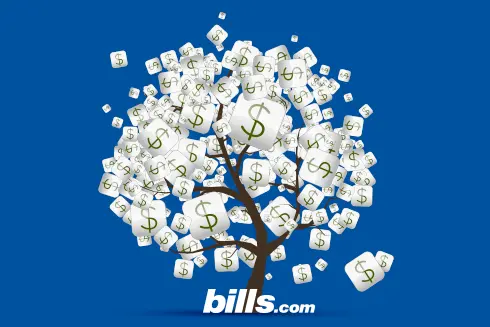Finding Debt Free Solutions

Get rid of your debt faster with debt relief
Choose your debt amount
Or speak to a debt consultant 844-731-0836
- 4 min read
- Avoid unhealthy debt.
- Use wise spending habits and channel your money to pay off long-term debt and savings.
- Debt settlement and debt management are two debt free solutions that work.
- Start your FREE debt assessment
Here are Debt-Free Solutions That Work!
Having trouble balancing your budget? Stressed out trying to make ends meet? If you have debt, and who doesn't, then you may want to find solutions to help you get debt free.
Take these three steps to become debt free:
- Know what kinds of debts you have.
- Use short term and long term strategies.
- Review your personal finances.
Debt Free: Getting Rid of Bad Debt
Debt is like a double-edge sword. It can be used wisely and help you build up equity and improve your overall quality of living. However, it also can be used to maintain an unsustainable standard of living and eventually cause you to drown in debt.
Four good examples of wise uses of debt include:
- Student Loans: Because they further one's education and increase future earning potential.
- Mortgages: Because home ownership is an asset that can build equity and new worth.
- Necessary Medical Bills: Because one's health always takes priority.
- Car Payment: Because a car is an essential part of your life. However, if you have the option to save for a car while your old one limps along, that would be a smarter choice.
Focus on freeing yourself from bad debt, such as credit card debts, and high-interest loans that you took to purchase everyday expenses, and larger ticket items such as appliances, furniture, vacations and other consumer items. Oftentimes, just repaying this debt takes a large part of your monthly income, that you struggle to pay those bills as well as your ongoing monthly expenses.
Quick tip
If you are struggling with IRS tax debt, get a no-cost, no obligation analysis of your options from one of Bills.com's pre-screened tax specialists.
Debt-Free Solutions
To reduce your debt and become debt free, combine everyday practices along with a debt relief program. once you are able to reduce your bad or unhealthy credit, maintain sound financial practices so you don't slide back into the bad debt cycle.
Everyday Practices:
Keeping a budget and monitoring your monthly expenses is an important step to being debt free. Here are nine good tips to use, so that you use your money wisely, and do not run up unhealthy debt:
- Buy in cash, and avoid buying on impulse.
- When you buy in installments, take the lowest period that you can afford and shop around for a good interest rate.
- If you can't afford it, don't buy it.
- Be careful for marketing traps. Avoid special offers with an introductory period that has no interest, but if you don't finish paying off by an early date, you will be charged high interest, including the original introductory period.
- Accelerate payments on your mortgage.
- Increase your income.
- Save money and apply to debt. Use the Bills.com saving machine for ideas on how to save money.
- Don't apply for new credit cards. Use existing ones less.
- Make sure that you have an emergency rainy day fund.
Remember, once you become debt free, keep using these everyday practices.
Debt Relief Programs
When looking for debt free solutions that work, you can choose from several programs. The four main factors in your decision include:
- How much you make,
- How much debt your have,
- What types of assets you own, and
- How much stress you can handle during the process.
Bills.com created the Debt Coach to help you analyze your debt problems and come up with the best debt relief program for you.

The four main programs available are:
- Credit Card Payment Strategies: Avoid making minimum payments on your credit cards. You will lengthen your payoff period and pay high financial costs. There are different strategies, such as snowball or avalanche. Some experts recommend paying off the highest interest rate debt first, and others recommend paying off the lowest balances first.
- Credit Counseling and Debt Management Program: A counselor will help analyze your financial situation and see if you can qualify for a debt management program. The company negotiates with your creditors lower interest rates and less fees. Under this program you will make one payment to an escrow account handled by the debt management company, who will then funnel the funds to your various creditors.
- Debt Settlement Program: A debt settlement company will negotiate with the creditors a reduction of principal. You make payments to an escrow account. The company can charge you only after it achieves real results.
- Bankruptcy: If you are being hounded by creditors, have court judgments against you, do not have adequate income to make negotiated payments, and other debt relief options are not appropriate, then consider either a chapter 13 or chapter 7 bankruptcy. The bankruptcy laws are very complicated and I recommend that if you choose this option, then consult with a lawyer who specializes in bankruptcy law.
Quick tip
Contact one of Bills.com's pre-screened debt providers for a free, no-hassle debt relief quote.
Review your Personal Finances
Choose the debt relief option best for you and work your way to being debt free. Concentrate on the unhealthy debt, budget carefully and then build your financial game plan to create net worth. By combining good spending practices, wise use of your money, and the correct debt relief program, you will find yourself debt free, less stressed and enjoying life more.

Get rid of your debt faster with debt relief
Take the first step towards a debt-free life with personalized debt reduction strategies.
Choose your debt amount
Or speak to a debt consultant 844-731-0836